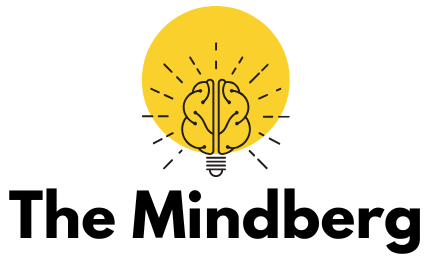Cannabis, a plant long associated with both medicinal and recreational use, has gained widespread attention for its effects on mental health. While many individuals use cannabis to relax or manage stress, it can paradoxically trigger anxiety in some users, leading to feelings of unease, panic, or even paranoia.
This phenomenon, known as cannabis-induced anxiety, highlights the complex relationship between cannabis use and mental well-being. Understanding how cannabis interacts with the brain is crucial for identifying the potential risks and benefits of its consumption.
The effects of cannabis on mental health depend on various factors, including dosage, frequency of use, and individual sensitivity. For some, cannabis provides a sense of calm and euphoria; for others, it may exacerbate feelings of anxiety or trigger episodes of intense discomfort.
These contrasting reactions often stem from the plant’s active compounds, particularly tetrahydrocannabinol (THC) and cannabidiol (CBD), which interact with the body’s endocannabinoid system in different ways.
As cannabis use becomes increasingly normalized and legalized in many regions, it is essential to explore its potential impact on mental health. This blog examines how cannabis can induce anxiety, the factors influencing this reaction, and strategies to minimize its occurrence. By shedding light on this topic, we aim to inform individuals about the potential mental health effects of cannabis and encourage informed, responsible use.
How Cannabis Interacts with the Brain
Cannabis exerts its effects primarily through the endocannabinoid system, a complex network of receptors and neurotransmitters involved in regulating mood, memory, and stress responses.
The two main compounds in cannabis, THC and CBD, interact with this system differently. THC, the psychoactive component of cannabis, binds to CB1 receptors in the brain, producing euphoria, altered perceptions, and, in some cases, anxiety or paranoia.
CBD, on the other hand, has non-psychoactive properties and is thought to counteract some of THC’s effects by modulating receptor activity. This balance between THC and CBD plays a critical role in determining an individual’s experience with cannabis. High-THC strains are more likely to induce anxiety, especially in users who are sensitive to its psychoactive effects.
Additionally, cannabis affects the release of neurotransmitters such as dopamine and serotonin, which influence mood and emotional regulation. While these interactions can produce relaxation in some users, they may overstimulate others, leading to feelings of unease or panic. The variability in these reactions underscores the importance of understanding individual differences in cannabis sensitivity.
Factors Contributing to Cannabis-Induced Anxiety
Several factors can increase the likelihood of experiencing anxiety after cannabis use. One of the most significant factors is dosage; consuming large amounts of cannabis, particularly high-THC strains, often overwhelms the endocannabinoid system, resulting in heightened anxiety. Even experienced users may find that consuming too much too quickly leads to discomfort.
Frequency of use also plays a role. Chronic cannabis users may develop tolerance to its calming effects, making them more susceptible to anxiety during use or withdrawal periods. Similarly, individuals with a history of anxiety disorders or other mental health conditions may be more vulnerable to cannabis-induced anxiety due to pre-existing imbalances in their brain chemistry.
Another critical factor is the method of consumption. Smoking or vaping cannabis delivers THC to the bloodstream rapidly, which can intensify its psychoactive effects and increase the risk of anxiety.
Edibles, while slower to take effect, often result in prolonged and unpredictable reactions that may heighten feelings of unease. These variables highlight the importance of considering personal circumstances and consumption methods when using cannabis.
The Role of Set and Setting
The environment and mindset, commonly referred to as “set and setting,” significantly influence how individuals experience cannabis. A relaxed, comfortable setting with supportive individuals can enhance feelings of calm and enjoyment. Conversely, consuming cannabis in stressful or unfamiliar environments often amplifies anxiety and paranoia.
Mindset also plays a crucial role. An individual’s mood, expectations, and mental state before using cannabis can shape their experience. Those who approach cannabis use with apprehension or fear are more likely to experience anxiety. This phenomenon is partly due to THC’s impact on the amygdala, the brain region associated with processing fear and emotions.
Understanding the role of set and setting can help users mitigate the risk of cannabis-induced anxiety. Creating a positive environment and approaching cannabis use with a calm, open mindset are essential strategies for minimizing adverse effects.
Recognizing the Symptoms of Cannabis-Induced Anxiety
Cannabis-induced anxiety can manifest in various ways, ranging from mild unease to severe panic attacks. Common symptoms include a rapid heartbeat, shallow breathing, sweating, dizziness, and an overwhelming sense of dread or fear.
These physical and emotional reactions often mimic the symptoms of generalized anxiety or panic disorders, making it challenging for individuals to differentiate between cannabis-induced anxiety and pre-existing conditions.
In some cases, users may experience derealization or depersonalization, feelings of being disconnected from reality or themselves. These symptoms can be particularly distressing, as they often lead to further anxiety and confusion. Recognizing these signs early is crucial for managing the situation effectively and preventing escalation.
Understanding the temporary nature of cannabis-induced anxiety can help alleviate some of the fear associated with these symptoms. Educating users about what to expect and how to respond during such episodes is vital for promoting safer cannabis use.
Strategies to Minimize Anxiety When Using Cannabis
Several strategies can help reduce the risk of experiencing anxiety while using cannabis. One of the most effective approaches is starting with a low dosage, particularly for individuals new to cannabis or those with a history of anxiety. Choosing strains with a higher CBD-to-THC ratio can also help, as CBD’s calming properties often counteract THC’s anxiety-inducing effects.
Mindful consumption practices, such as taking slow, deliberate doses and waiting for the effects to set in before consuming more, can prevent over-intoxication. Additionally, using cannabis in a familiar, relaxing environment with trusted companions can create a positive experience and reduce the likelihood of anxiety.
Hydration, proper nutrition, and a calm mindset before using cannabis further contribute to minimizing anxiety. For those who frequently experience cannabis-induced anxiety, consulting with a healthcare professional or considering alternative relaxation methods may be beneficial.

